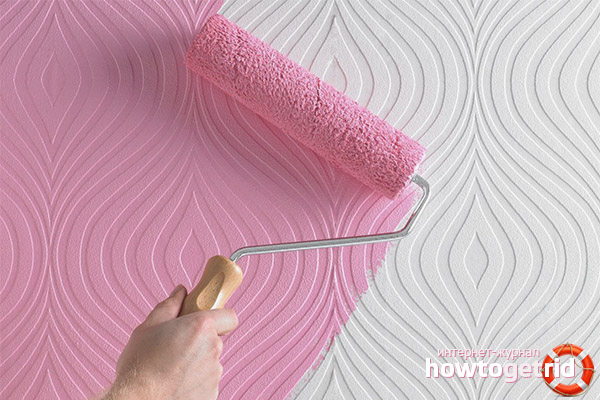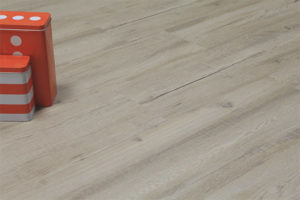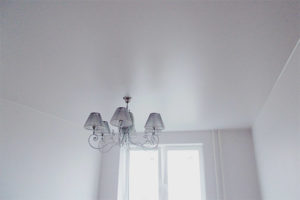The content of the article
Regardless of which interior design is chosen to design the living space, the walls of the room will always play the main role. This is justified by the fact that they act not only as a background, but also set the character of the design. Based on the appearance of the wall, in the future appropriate design elements are selected, such as textiles, flooring, furniture and other decorative solutions are thought out.
Today, in any hardware store, consumers are offered a fairly large assortment to choose the suitable option and materials regarding wall decoration. An important role in choosing the finishing material for the wall is played primarily by the personal preferences of the consumer, the features and the area of the walls that need to be decorated, as well as the specifics of the room where the repair work will be carried out. And, of course, the financial component of the whole process is taken into account without fail.
In fact, there can be many criteria by which this or that material is selected. The choice should be made based solely on individual preferences. However, wallpaper for painting has undeniable advantages relative to other types - they are glued quite simply, and the process itself does not take much time. Due to such simplicity in the decoration of the walls, the pasting of the room can be performed within a couple of days - this, in comparison with other materials, is very convenient.
Thanks to a wide range, you can pick up any shade or pattern of canvas of interest, as well as texture and texture. In addition, it is possible to choose such wallpaper for painting, which have a number of additional properties, for example, they can be moisture resistant or washable.
You can easily combine different types of such wallpapers when designing in one room. If necessary, they can be easily re-glued - this can be done both for the purpose of updating the appearance, and for a radical change in design. The main advantage of wallpaper for painting is that the selection of shade and pattern is not difficult.
Types of wallpaper for painting
Among most people, there is an opinion that there are no particular differences between wallpaper intended for painting, and that they are all almost the same. In fact, this is far from the case, since they all differ from each other in various factors and properties. There are three options for the main types of this finishing material for walls, all of them have their own certain advantages and disadvantages, starting from which, in fact, the selection of wallpaper necessary for painting takes place.
Wallpaper for painting from paper
This version of wall decoration materials is the most common and is the widest segment of this group of materials. The variety of assortment is quite large, and thanks to the huge demand, this type of wallpaper can be found absolutely everywhere where building materials are sold, both in a large hypermarket and in a small hardware store. Such an unprecedented popularity of paper wallpaper for painting is explained by the fact that it is incredibly easy to work with, they do not require a lot of time and effort for gluing. It is possible to give the room an attractive appearance literally within a few days. Such wallpapers are well suited in cases where there is a need to mask any minor defects or damage in the form of small cracks, scratches and even shallow potholes on the pasted wall.
However, if the wall is too mottled and defective, has significant potholes and cracks, the use of paper wallpaper will be extremely impractical, since they will not adhere well to such a surface, and even if they are glued securely, they will not hide, but, on the contrary, expressly emphasize all existing shortcomings walls.
Wall decoration with paper wallpaper for painting is most often used to design a living room or a children's room, in some cases such wallpapers are glued in the kitchen. However, when choosing such a material for a kitchen room, special attention must be paid to its properties. The thing is that the kitchen is a rather specific room, as temperature changes often occur there and partial pollution of wallpaper with fats and other fumes that occur during the cooking process is possible. Therefore, in order to maximize the life of such wallpaper in the kitchen, wallpaper should be used with a water-repellent layer, which prevents the appearance of a negative reaction to moisture. Due to the dense base and special surface coating of this material, it can be painted repeatedly, changing the shades of paint.
Re-painting is used mainly to update the interior of the room in the case when the old shade is boring. Performing redecoration in a room where there are wallpaper for painting on the walls is much cheaper, since it reduces the additional cost of finishing material. All that is needed is just to pick up a new, liked shade and repaint the walls.
Very popular are wallpapers that have a spectacular texture and a noticeable relief, due to which a beautiful imitation of decorative plaster is created, without the enormous cost of effort and money. With the help of paper painting wallpapers, it is possible to design not only walls, but also ceilings, since this process is very inexpensive and quickly enough implemented. Pasting an area equal to the standard room in the apartment will take no more than three to four hours if several people are involved in this at once.
Wallpaper for painting from flezilin
In addition to paper, no less popular are the flesilin painting wallpaper. The difference between this finishing material and paper wallpaper is the texture and the way it is made. The production of flezilin wallpaper for painting is the pressing of three or more wallpaper paintings with each other. Foamed materials are most often applied to the upper face layer, which in the future, after pasting, will manifest themselves as texture and add volume to the wallpaper pattern on the wall. Flesilin wallpaper is characterized by increased strength, which is due to the applied upper layer, and that is why they won love among a large number of buyers.
This type of decoration material is most often used during the design of the premises of new, newly built houses. This is justified by the fact that new homes undergo a shrinkage process for a long period of time, during which minor wall shifts are possible. So, these shifts do not have any negative effect on such wallpapers, they are not damaged, do not deform and transfer the shrinkage process absolutely calmly, without external changes.
If there are slight defects on the walls, this finishing material will greatly help to hide them. Its plus lies in the fact that it is quite easy to apply to the wall and just as easily removed from it, regardless of the length of stay on the surface, if necessary re-sticking the material.In order to remove the flezilin wallpaper from the walls, it is necessary to use a spatula to pry the strip from one edge and then it will independently move away, without the use of additional means and efforts, from the surface with a whole strip. Such wallpapers can be repeatedly repainted in completely different shades, without the need for matching similar colors. There are several ways to apply paint to the wallpaper, depending on what end result you need to achieve.
Quite popular today is the method of applying paint not on the front side of the wallpaper strip, but on the inside, with which it will be glued to the surface. This is justified by the heterogeneity of the wallpaper, which can be enlightened in some places. Thus, the internal coloring of the wallpaper allows you to achieve smooth transitions of shades, from more saturated to less bright and muffled, and almost pastel. The second method that is in demand is spot dyeing with a sponge, which is dipped in paint and applied to the surface. Wallpaper before spotting can be painted in any color for the background, or left white. The application of paint with a sponge is performed using light strokes, in most cases, the embossed part of the wallpaper is painted to highlight the pattern.
In addition to the advantages, non-woven wallpaper for painting has some disadvantages, which include the top layer of foam material, since it is incredibly easy to damage. Therefore, the use of this finishing material in rooms such as a nursery or a hallway will be extremely inappropriate. If you use flezilin wallpaper as finishing materials for such rooms, you need to take care to protect the surface from damage. To do this, you can use wooden or plastic panels that are mounted on the bottom of the walls. In addition to damage, this material quickly burns out due to exposure to sunlight. Accordingly, choosing a shade for painting wallpapers intended for rooms with abundant sunlight, it is necessary to give preference to lighter colors, which will fade less.
Glass Wallpaper
Glass wallpaper is a rather interesting material, since its manufacture is a yarn of limestone fiber, quartz sand and dolomite. This kind of wallpaper has its own advantages and disadvantages.
When choosing glass-wallpaper as a finishing material, it is necessary to consult with a specialist during the purchase of the material, since at home it will lead a slightly different story than it was presented at the time of sale. Such a change in the behavior of the material is explained by the so-called "loose threads" that are used in wallpaper. Their application to the wallpaper during manufacture can be done using pressure, which ultimately looks like a “fluffy” and voluminous texture on the surface of the material. However, it can disappear incredibly quickly after the first contact with a spatula in the process of pasting the walls.
Also, choosing such a material for painting, one should avoid excessively dense and thick wallpaper, since this directly indicates that during manufacture the manufacturer went too far with special impregnation. If the content of such an impregnation in the glass-wallpaper is rather large, then there is a likelihood that when gluing, the texture of the wallpaper is wrinkled, as a result of which it will lose its expressive appearance.
Video: how to glue wallpaper for painting











Submit